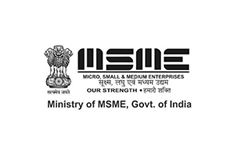Every now and then, we get a client request that makes us pause, smile, and sometimes sigh:
“Can you share a screenshot of what percentage of this article is AI-generated?”
It’s a fair question in their minds. But in practice, it feels a bit like asking if your chaiwala right below your office used a coal stove or an induction plate. The tea still tastes the same; it still gives you the much-needed impetus, right before you step into a meeting marathon. Just faster, cleaner, and with less smoke.
The obsession with “purity” in writing reminds me of another outdated contrast. Imagine if we still insisted that offices run on typewriters instead of laptops, or that every note in a boardroom be handwritten in long registers instead of captured on email. Would any business leader accept that in 2025? Of course not. Speed, efficiency, and adaptability are non-negotiable. Writing is no different.
Why Writers Can’t Be Purists Anymore
Business moves at breakneck speed. Market conditions shift overnight, policies are announced at 9 PM and take effect by 9 AM, and customer expectations evolve faster than we can draft memos. Expecting writers to remain “pureplay”, working only with a blank page and blinking cursor, is a little like asking your finance team to do GST calculations by hand when software exists. Possible, but wildly inefficient.
For brands hiring agencies like ours, the bigger truth is this: AI is not replacing writers. It is reshaping how writers work. And if your content partner is smart, they’re using AI to make your brand communication sharper and more relevant.
How We Use AI in Our Work (Without Losing the Human Layer)
Here’s a peek into our toolkit, and how AI supports, not substitutes, our craft:
- ChatGPT: Think of it as our whiteboard companion. It helps us sketch structures, break down complex data into storylines, or even suggest a few alternate ways to headline a report. For instance, when drafting a deck for a recent financial client, I used ChatGPT to explore multiple narrative flows before selecting the one that aligned with the brand’s voice. The machine gave me options; I made the judgment call.
- Grok: This one is the witty team member. Perfect when we need a sharp, playful twist in copy. It’s not always polished, but it’s fast, and sometimes that speed is the spark.
- Perplexity: Our in-house researcher. When time is tight and accuracy is critical, Perplexity delivers quick, sourced insights.
- Turboscribe: Imagine running a 2-hour leadership workshop with six voices and dozens of insights. Earlier, we would spend at least a day or two transcribing notes. Now, Turboscribe does it in minutes, and we spend our energy drawing out themes and insights that matter.
- Grammarly: This is our finishing school. It polishes grammar, tone, and readability so even on rushed timelines, the final draft is clean and professional.
Each tool plays its role. But the story, the rhythm of the sentences, the cultural resonance of the examples, the clarity of the message, still depend on us, the writers. AI can generate; writers interpret, shape, and humanise. And let’s face it. To be a good prompt engineer, you have to be a good writer first.
A Question of Value, Not Percentages
So instead of asking how much of an article is “AI-generated,” we ask ourselves:
- Is this piece helping me communicate better?
- Is it efficient, saving my team time and effort?
- Is it accurate, reliable, and ready to share without second-guessing?
- Did it land faster, without compromising on quality?
That’s where AI + writer collaboration delivers real business value: efficiency, accuracy, and faster turnaround times.
The Bigger Picture
We don’t measure how much of our financial analysis is software-driven versus calculator-driven. We care about the quality of the insights. We don’t ask how much of a marketing film was created using editing software versus raw camera footage. We care about the final impact.
Content should be viewed the same way.
Ultimately, being a good prompt engineer is not enough. The real difference lies in being a good writer. Someone who knows which ideas to discard, which words to polish, and how to make a brand sound alive.
So, the next time you find yourself asking “what percentage of this is AI?” pause and ask instead: “Is this piece moving the needle for my business?”
If the answer is yes, then the robot count in my sentences doesn’t matter.












No Comments on Stop counting the robots in my sentences